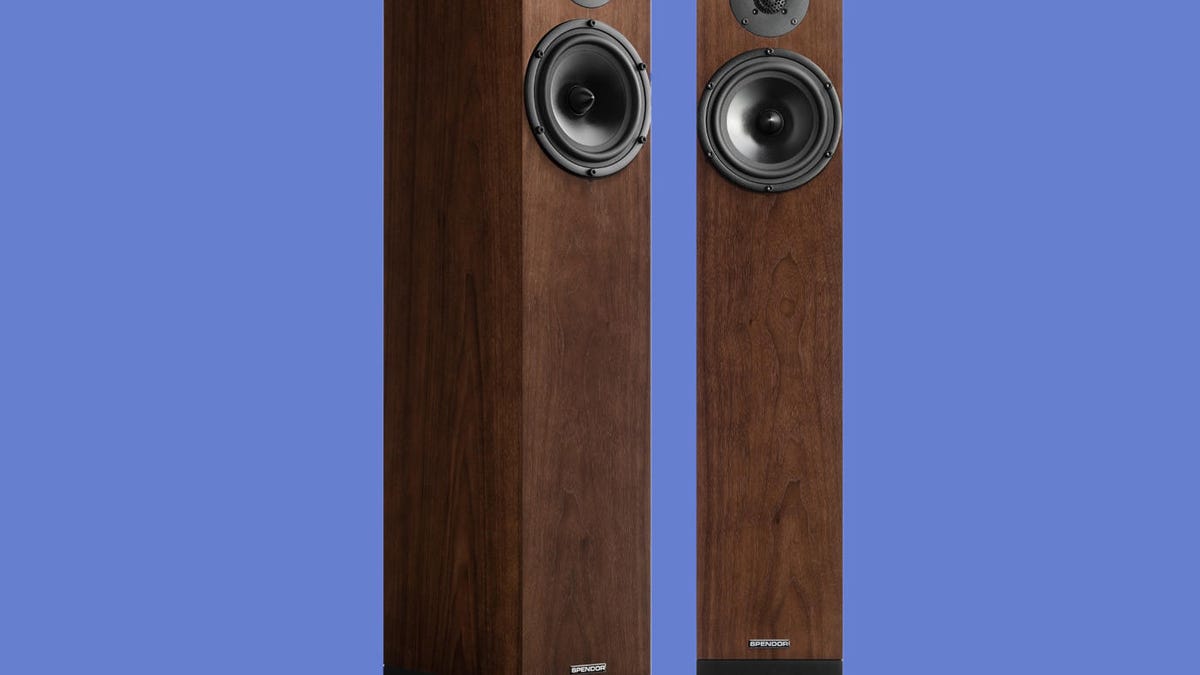An elegant new tower speaker for upscale audiophiles
Meet the Spendor A7, the perfect blend of traditional and contemporary UK design and sound.

Meet the Spendor A7 speakers
American and British speaker design ethoses have always been very different. American brands such as Klipsch, Tekton, Vandersteen and Zu all share a common proclivity for dynamics and colorful sound. Brit brands such as Harbeth, KEF and Spendor are more reserved. Their Britishness always shines through as they seduce the ear.
Take this new speaker from Spendor, the A7. It looks the part; nothing flashy going on here, just an elegant design that should stand the test of time. The sound, however, is something new.
The British-made A7 is 37 inches (nearly 1 meter) high, the front baffle is fitted with a 1 inch (22mm) polyamide tweeter and a 7 inch (178mm) polymer woofer. At first I thought the A7 was a sealed (acoustic suspension) design, but a closer look revealed a rectangular bass port just below the speaker cable connectors. The A7's internal cables are silver plated copper, the crossover features high linearity capacitors, and the speaker's impedance is rated at 8 ohms. The handsome black ash, dark walnut, or natural oak real wood finishes are commensurate with the A7's price: $4,995 in the US, £3,200 in the UK, and AU$5,999 in Australia (per pair).
I partnered the A7s with a Bryston B135.3 integrated amp and Bryston BCD-3 CD player, and played LPs on a Dr. Feickert Volare turntable for all of my listening tests at the Sound by Singer store in NYC. Straight away the music was unerringly precise and clear; there's no blurring or muddiness going on here! It's very British, but with stepped-up clarity.
The A7 (left), Harbeth M 30.2 (right)
No baby boomer audiophile would mistake the A7 for the polite British sound of years past, the A7s immediacy came to the fore with Paul Simon's recent In The Blue Light album, There's an unforced purity to the sound that puts the music first on these old Simon tunes, spiffed up with wonderful new arrangements. Simon's vocals are upfront and very present, though a little thin, but this recording sounds like that. The A7 tells it like it is.
On jazz guitarist Bill Frisell and bassist Thomas Morgan's Small Town duets album, the sound balance warmed up nicely, especially on Morgan's dexterous bass fingerings. There's nice weight down there, and Frisell's airy, almost ambient guitar floated free of the speakers. I really felt the connection between the two improvising players.
For comparison listening tests I used a pair of Harbeth M 30.2 stand mount speakers ($6,995/£3,895/AU$6,950 per pair), and the sound took a sharp turn to fuller and richer than the A7's. The contrast was bigger than I expected; the A7 is leaner, and its cooler tonal balance sounded faster and more dynamically alive. The M 30.2's softer presentation was no less musically engaging, but it's less vivid overall.
The Doors' Waiting for the Sun album rocked with gusto on both speakers, but there was something about the way Jim Morrison's vocal swagger really cut through over the A7s. In comparison the M 30.2s' sound had more flesh-and-blood soul to it.
Both speakers are strong performers, but they will appeal to different tastes. The Harbeth M 30.2 is more old-school British, the Spendor A7 is more 2019 transparent and dynamic. If you want to hear every last detail, a pair of Spendor A7s deserve your consideration.

